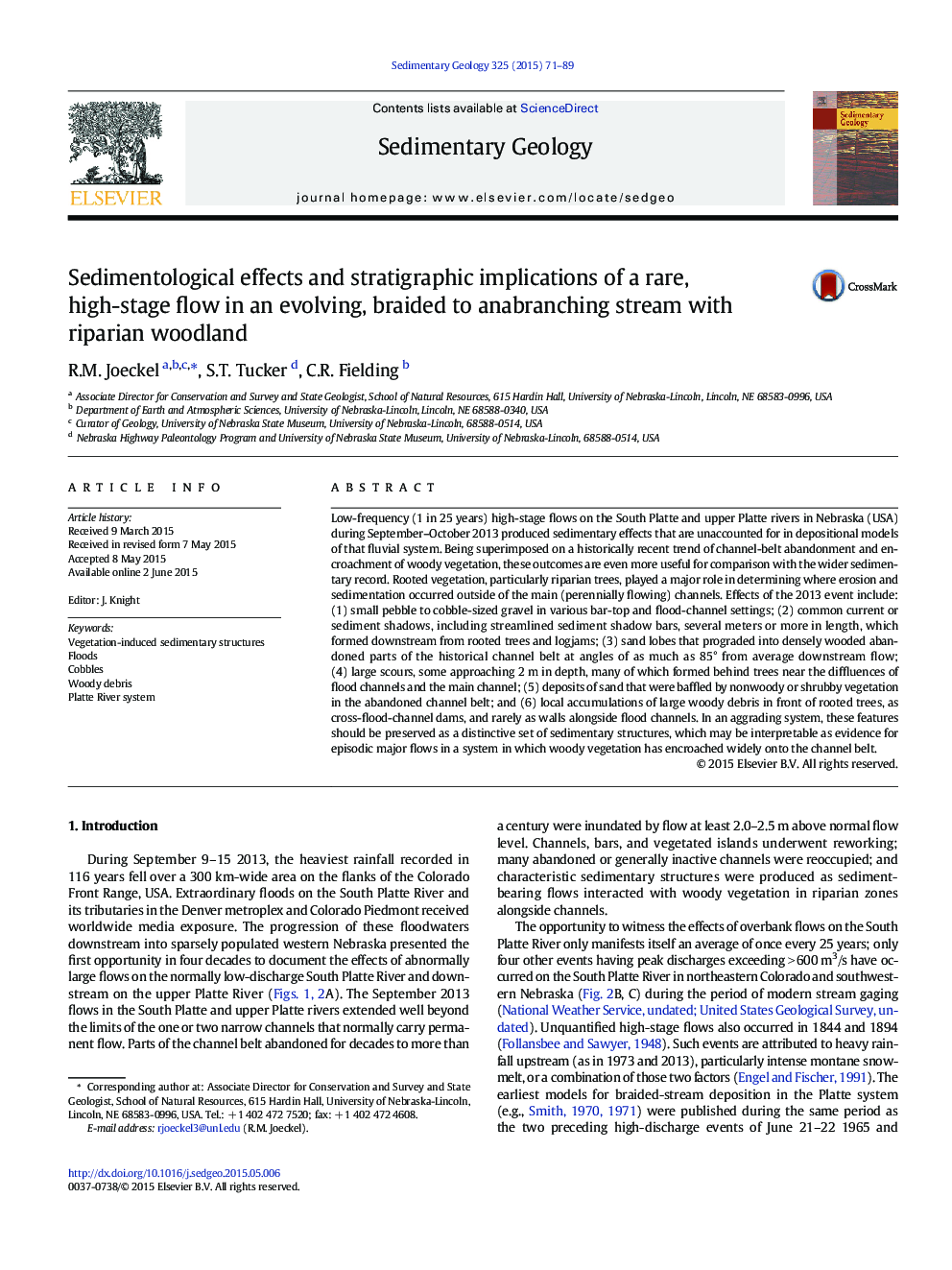| Article ID | Journal | Published Year | Pages | File Type |
|---|---|---|---|---|
| 4689228 | Sedimentary Geology | 2015 | 19 Pages |
Low-frequency (1 in 25 years) high-stage flows on the South Platte and upper Platte rivers in Nebraska (USA) during September–October 2013 produced sedimentary effects that are unaccounted for in depositional models of that fluvial system. Being superimposed on a historically recent trend of channel-belt abandonment and encroachment of woody vegetation, these outcomes are even more useful for comparison with the wider sedimentary record. Rooted vegetation, particularly riparian trees, played a major role in determining where erosion and sedimentation occurred outside of the main (perennially flowing) channels. Effects of the 2013 event include: (1) small pebble to cobble-sized gravel in various bar-top and flood-channel settings; (2) common current or sediment shadows, including streamlined sediment shadow bars, several meters or more in length, which formed downstream from rooted trees and logjams; (3) sand lobes that prograded into densely wooded abandoned parts of the historical channel belt at angles of as much as 85° from average downstream flow; (4) large scours, some approaching 2 m in depth, many of which formed behind trees near the diffluences of flood channels and the main channel; (5) deposits of sand that were baffled by nonwoody or shrubby vegetation in the abandoned channel belt; and (6) local accumulations of large woody debris in front of rooted trees, as cross-flood-channel dams, and rarely as walls alongside flood channels. In an aggrading system, these features should be preserved as a distinctive set of sedimentary structures, which may be interpretable as evidence for episodic major flows in a system in which woody vegetation has encroached widely onto the channel belt.
